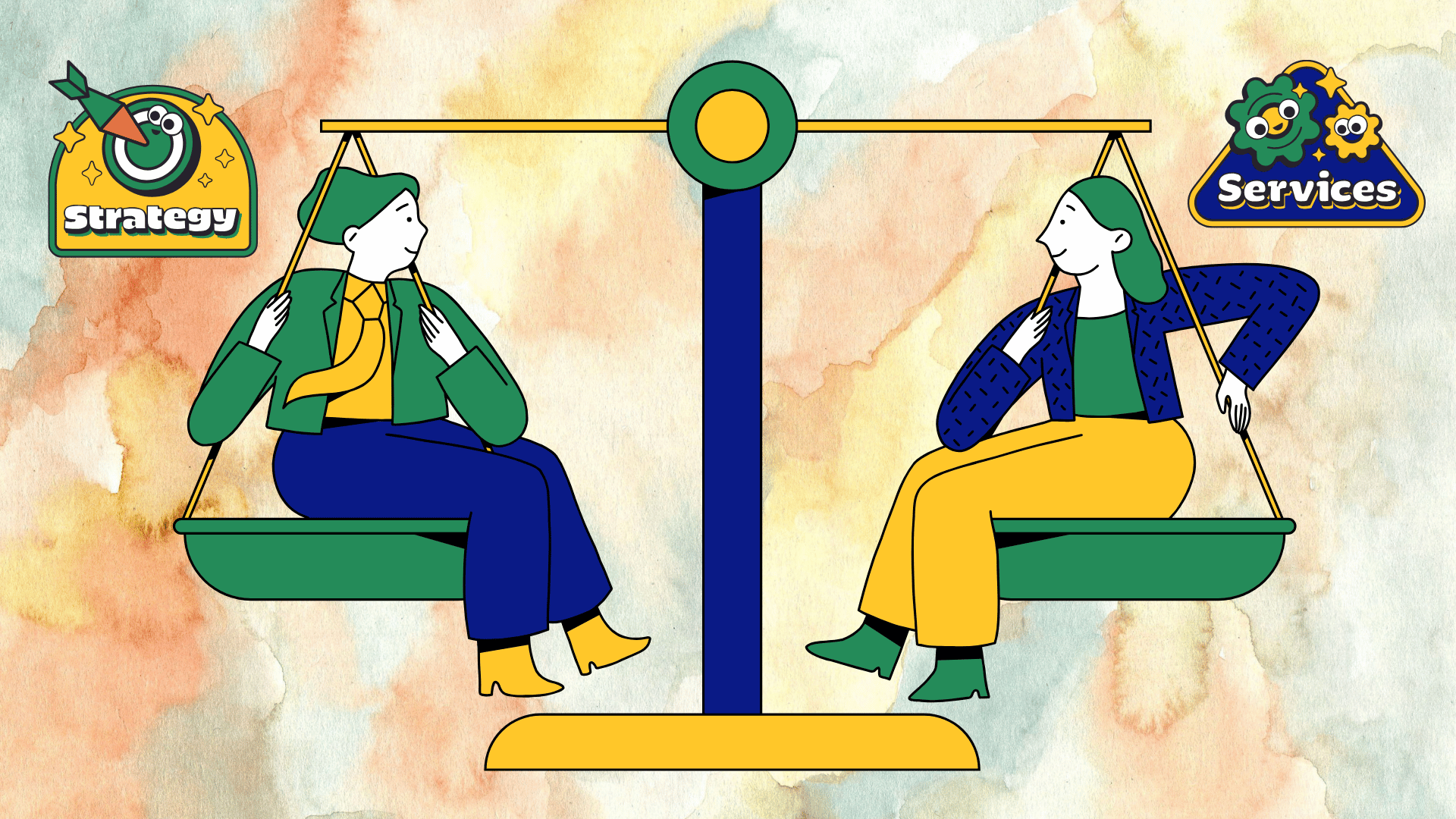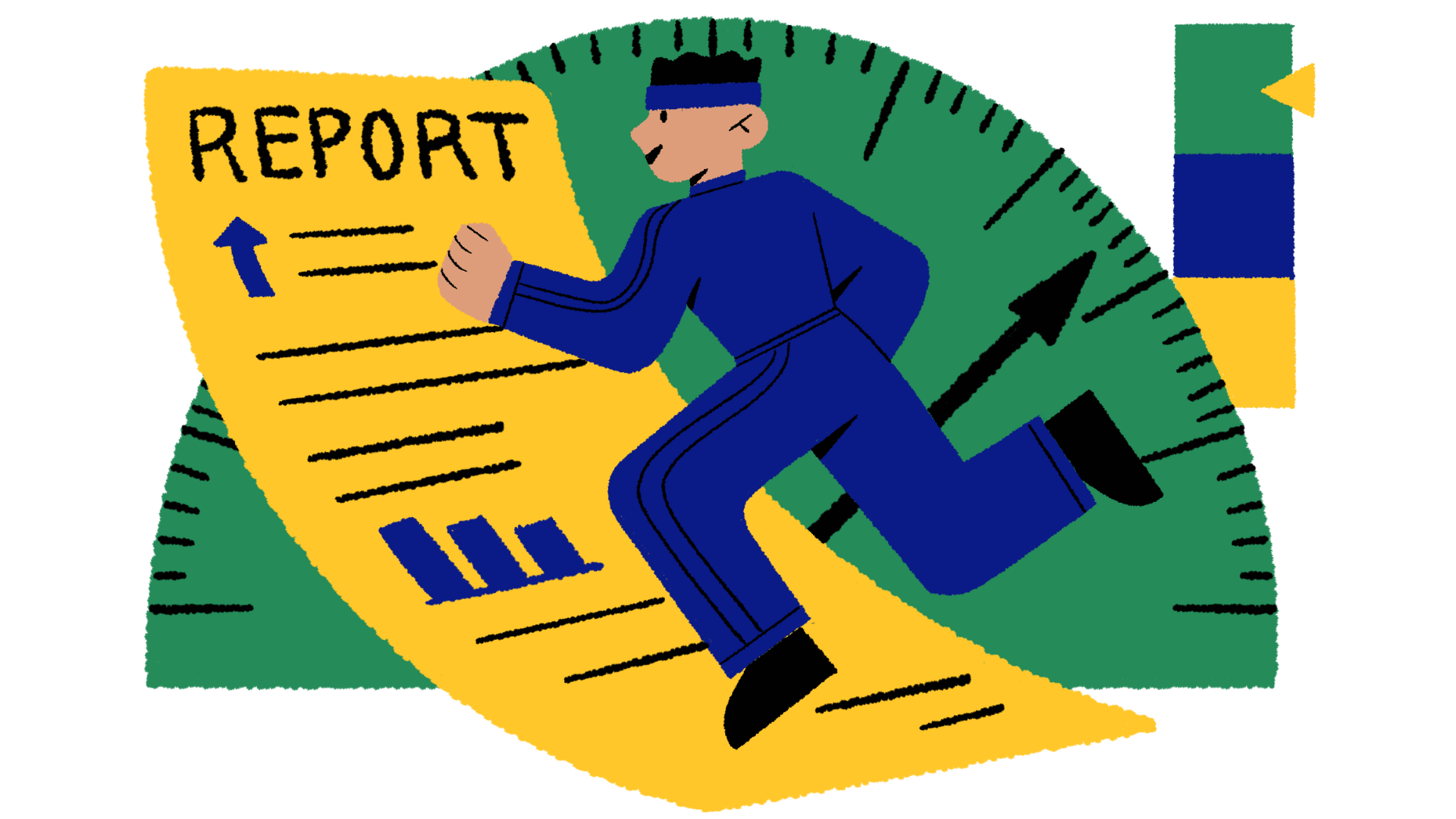The enterprises gaining measurable competitive advantages in software delivery aren’t necessarily hiring more people or extending timelines. They’re strategically investing in something more sustainable: unlocking their workforce’s potential through AI collaboration skills.
Note: Results and timelines presented in this analysis are based on early adopter case studies from 2024-2025 implementations. Individual outcomes vary significantly based on organizational maturity, implementation quality and industry context.
The Productivity Paradox Facing Modern Enterprises
Quality engineering departments across industries are caught in an impossible squeeze. Software complexity is exploding, release cycles are compressing and stakeholder expectations for flawless user experiences have never been higher. Yet traditional approaches to scaling QA operations, such as adding headcount, extending timelines, or accepting technical debt, are no longer viable in today’s economic climate. According to McKinsey, 92% of companies plan to increase their investments in AI over the next three years, yet only 1% of leaders describe their current AI deployment as “mature”
The organizations breaking free from this paradox share one common thread: they’ve invested strategically in AI upskilling, transforming their quality engineering workforce into productivity powerhouses through prompt engineering and context engineering mastery. The World Quality Report 2024, a definitive industry benchmark, reveals that a significant 68% of organizations are actively leveraging Generative AI to advance their quality engineering capabilities.
The Digital Twin Multiplier Effect
When quality professionals master AI collaboration, they don’t just work faster, they work exponentially smarter. Each team member effectively gains a digital twin: an AI collaborator that amplifies their analytical capabilities, accelerates their decision-making and extends their testing reach beyond what was previously possible.
This isn’t about replacing human judgment with automation. This is about augmenting human expertise with artificial intelligence to create hybrid workflows that deliver unprecedented business outcomes.
Enterprise-Scale Impact: The Size-Specific Opportunity
Micro Enterprises (1-50 employees)
The Bootstrap Advantage: Limited resources demand maximum leverage from every team member.
Strategic Focus: Cross-functional team members wearing multiple hats can use AI to punch above their weight class. A developer doing part-time QA work can generate comprehensive test suites that rival dedicated QA departments at larger organizations.
Investment Threshold: $3,000-8,000 annually per multi-role contributor (includes training, tools and 20% learning time allocation)
Expected ROI: 40-80% productivity increase in quality-related tasks within 12 months’
Timeline to Impact: 60-90 days for basic proficiency, 120+ days for advanced integration
Small Enterprises (51-200 employees)
The Specialization Catalyst: Dedicated QA roles can achieve enterprise-grade sophistication without enterprise-scale overhead.
Strategic Focus: Building quality engineering competencies that traditionally required senior-level expertise. Junior and mid-level QA professionals can deliver strategic testing insights through AI-augmented analysis.
Investment Threshold: $25,000-45,000 annually (includes comprehensive training, AI tools licensing, process integration support)
Expected ROI: 35-60% improvement in test coverage efficiency and 25-40% reduction in critical defect escape rate
Timeline to Impact: 90-120 days for measurable improvements
Medium Enterprises (201-1000 employees)
The Scale Optimization: Multiple product lines and complex integrations demand consistent quality standards across diverse teams.
Strategic Focus: Standardizing AI-enhanced quality practices across business units while maintaining flexibility for domain-specific requirements. Creating centers of excellence that propagate best practices organization-wide.
Investment Threshold: $75,000-200,000 annually (includes training, enterprise AI platform licensing, change management, internal coaching)
Expected ROI: 20-35% reduction in critical defects reaching production, 15-25% improvement in release velocity
Timeline to Impact: 120-180 days for organization-wide adoption
Large Enterprises (1000+ employees)
The Innovation Differentiator: Market leadership requires quality engineering capabilities that competitors cannot easily replicate.
Strategic Focus: Building proprietary AI-human collaboration methodologies that create sustainable competitive advantages. Developing internal thought leadership and industry-setting quality standards.
Investment Threshold: $300,000-800,000+ annually (includes comprehensive training programs, custom AI integration, dedicated transformation teams, ongoing optimization)
Expected ROI: 15-30% improvement in time-to-market while maintaining quality standards, 20-40% increase in testing efficiency
Timeline to Impact: 180-270 days for measurable enterprise-wide transformation
The Tangible Business Outcomes
According to IDC’s 2024 study, companies investing in AI are realizing significant returns, with an average ROI of $3.7 for every $1 invested. Notably, 5% of organizations worldwide are achieving an even higher average ROI of $10 for every $1 invested. Organizations investing in AI upskilling for their quality engineering workforce are reporting measurable improvements across key performance indicators, though results vary significantly based on implementation quality and organizational maturity:
Velocity Metrics (based on early adopter case studies from 2024-2025):
- Test case creation time reduced by 30-50% for routine scenarios
- Requirements analysis cycles shortened by 20-35% through AI-assisted gap identification
- Defect triage and initial analysis accelerated by 40-60%
Quality Metrics (measured over 6-12 month implementation periods):
- Critical production defects decreased by 15-30% when combined with proper process integration
- Test coverage breadth increased by 20-35% without proportional effort increase
- Regression testing effectiveness improved by 25-40% through AI-assisted prioritization
Cost Efficiency (typically realized after 6+ months of consistent usage):
- Per-defect investigation time reduced by 25-40%
- Quality engineering resource utilization optimized by 15-25%
- Training time for new QA hires on complex scenarios decreased by 30-45%
Strategic Advantages (longer-term benefits over 12-18 months):
- Competitive time-to-market improvements of 10-20% in best-case scenarios
- Enhanced ability to support 15-30% more concurrent testing initiatives
- Improved stakeholder confidence through more comprehensive test documentation
Critical Success Factors and Risk Mitigation
Security and Compliance Considerations
Data Governance: AI tools require careful management of sensitive test data, customer information and proprietary business logic. Organizations must establish clear data handling protocols and ensure AI platforms meet industry-specific compliance requirements (SOX, HIPAA, PCI-DSS, GDPR).
Intellectual Property Protection: Training materials, prompt libraries and custom AI workflows represent valuable IP assets requiring appropriate security controls and access management.
Change Management Imperatives
Workforce Adaptation: 20-30% of quality engineering professionals may initially resist AI integration. Successful programs require dedicated change management support, clear communication about job evolution (not replacement), and recognition systems for early adopters.
Process Integration: AI upskilling fails without corresponding updates to quality gates, documentation standards, and team collaboration workflows. Budget 25-35% of total investment for process redesign and integration work.
Measurement and Evaluation Framework
Leading Indicators (trackable within 30-60 days):
- Training completion rates and competency assessments
- AI tool adoption metrics and usage patterns
- Employee sentiment and confidence surveys
Lagging Indicators (measurable after 90-180 days):
- Defect detection efficiency and false positive rates
- Test cycle time and coverage improvements
- Customer satisfaction and production incident trends
Risk Factors and Mitigation Strategies
Over-reliance on AI outputs: Establish human review protocols for critical testing decisions. Budget for “AI literacy” training that emphasizes when not to use AI assistance.
Tool Vendor Lock-in: Develop portable skills and prompt libraries that work across multiple AI platforms. Maintain relationships with 2-3 vendors to ensure competitive pricing and feature evolution.
Skill Atrophy: Maintain baseline manual testing capabilities and critical thinking skills. Rotate team members between AI-assisted and traditional workflows periodically.
Industry-Specific Implementation Considerations
Financial Services: Emphasize explainable AI outputs for regulatory compliance. Focus on AI-assisted risk scenario generation and compliance testing automation. Expect 3-6 month longer timelines due to security reviews and regulatory validation.
Healthcare/Medical Devices: Prioritize FDA validation requirements and patient safety protocols. AI assistance for clinical testing scenarios requires specialized training and validation processes. Budget 40-60% additional time for regulatory alignment.
E-commerce/Retail: Leverage AI for seasonal load testing, user journey optimization, and personalization quality assurance. Focus on AI-assisted A/B testing validation and performance testing at scale.
Manufacturing/IoT: Apply AI skills to edge case testing, sensor data validation and integration testing across diverse hardware configurations. Emphasize AI-assisted failure mode analysis and predictive quality modeling.
ROI Calculation and Investment Justification
Baseline Measurement Requirements
Before implementing AI upskilling programs, organizations must establish clear baseline metrics:
Time-based Metrics: Average hours spent on test case creation, defect analysis, requirements review and documentation tasks. Track by role and complexity level.
Quality Metrics: Current defect escape rates, customer-reported issues per release and time-to-resolution for critical bugs. Include severity classification and business impact assessment.
Cost Metrics: Fully loaded cost per quality engineering hour, cost per defect detected/resolved and opportunity cost of delayed releases or quality issues.
Investment Calculation Framework
Year 1 Total Cost of Ownership:
- Training and certification costs (typically $3,000-8,000 per person)
- AI platform licensing and integration (15-25% of training costs)
- Lost productivity during learning curve (equivalent to 10-15% FTE capacity for 3-4 months)
- Change management and process integration support (20-30% of direct training costs)
Projected Benefits Timeline:
- Months 1-3: Minimal measurable impact, focus on adoption metrics
- Months 4-6: 10-20% improvements in routine task efficiency
- Months 7-12: 15-30% overall productivity gains with properly implemented processes
- Year 2+: Compound benefits through accumulated expertise and process optimization
The Implementation Framework
Phase 1: Foundation Building (Months 1-3)
Objective: Establish AI literacy and basic prompt engineering capabilities across the quality engineering organization.
Activities:
- Comprehensive skills assessment and AI readiness evaluation
- Baseline productivity metrics establishment and measurement framework setup
- Security and compliance review for AI tool selection
- Core AI collaboration training program launch (40-60 hours per participant)
- Pilot project identification and early wins demonstration
Phase 2: Specialization Development (Months 4-6)
Objective: Build advanced context engineering capabilities and role-specific AI workflows.
Activities:
- Advanced training tracks for different QA specializations
- Custom prompt libraries and context frameworks development
- AI tool integration with existing quality management systems
- Cross-team collaboration protocols and knowledge sharing initiatives
- Performance tracking dashboard implementation and first quarterly review
Phase 3: Organization Integration (Months 7-9)
Objective: Embed AI-augmented quality practices into standard operating procedures and strategic planning.
Activities:
- Process documentation updates and standardization across teams
- Quality metrics integration with business intelligence and reporting systems
- Centers of excellence establishment and internal certification programs
- Change management assessment and resistance point mitigation
- Vendor relationship optimization and contract renegotiation
Phase 4: Competitive Advantage (Months 10+)
Objective: Leverage AI-human collaboration capabilities for market differentiation and industry leadership.
Activities:
- Proprietary methodology development and intellectual property protection
- Industry thought leadership positioning and best practice publication
- Advanced experimentation with emerging AI technologies and beta programs
- Strategic partnership development and ecosystem expansion
- Continuous improvement culture establishment and innovation pipeline creation
The Long-Term Strategic Benefits
Enterprises that invest early in AI upskilling for quality engineering are positioning themselves for sustained competitive advantages that compound over time:
Talent Attraction and Retention: Organizations known for cutting-edge quality engineering practices attract top-tier talent and experience significantly lower turnover in critical roles.
Scalability Without Friction: AI-augmented teams can absorb increased workloads, support new product launches, and adapt to market changes without the traditional growing pains associated with scaling quality operations.
Innovation Velocity: When quality engineering becomes a strategic enabler rather than a bottleneck, organizations can experiment more boldly, iterate faster, and capture market opportunities ahead of competitors.
Risk Mitigation: Advanced AI-human collaboration in quality engineering provides more robust defect prevention, better risk assessment, and superior crisis response capabilities.
The Strategic Investment Decision
For Micro/Small Enterprises: Focus on immediate productivity multipliers with measurable payback timelines. The investment typically pays for itself within 8-12 months through reduced defect remediation costs and improved delivery predictability.
For Medium Enterprises: Emphasize consistency and risk reduction benefits across multiple teams. The investment justifies itself through improved cross-team collaboration and 15-25% reduction in quality-related project delays over 12-18 months.
For Large Enterprises: Position as strategic competitive advantage and innovation catalyst. The investment creates measurable market differentiation opportunities over 18-24 months, with benefits compounding through organizational learning and process optimization.
The Window of Strategic Opportunity
Organizations making structured AI upskilling investments today are building capabilities that will become table stakes within 24-36 months. While the technology continues evolving rapidly, the fundamental skills of prompt engineering and context engineering provide a stable foundation for adapting to new AI capabilities as they emerge.
Quality engineering teams equipped with advanced AI collaboration skills aren’t just delivering incrementally better outcomes, they’re redefining efficiency benchmarks and quality standards within their competitive landscape.
Early evidence clearly indicates this transformation is underway. The strategic question is whether an organization will invest proactively in workforce development or reactively respond to competitive pressure when AI-enhanced quality engineering becomes an industry standard.
Results vary significantly based on implementation approach, organizational commitment, and change management effectiveness. Organizations considering AI upskilling investments should begin with comprehensive workforce assessment, pilot program design, and clear ROI measurement frameworks before committing to enterprise-scale transformation programs.
Resources:
- The state of AI: How organizations are rewiring to capture value, McKinsey
- We’re all techies now: Digital skill building for the future, McKinsey
- World Quality Report 2024, Capgemini
- AI-powered success—with more than 1,000 stories of customer transformation and innovation, Microsoft
- IDC’s 2024 AI opportunity study: Top five AI trends to watch
- How Much Does It Cost to Train an AI Model – The Complete Guide
- The Cost of Implementing AI in a Business: A Comprehensive Analysis
- How Much Does it Cost to Develop Artificial Intelligence Applications?
- AI in Software Testing: How Artificial Intelligence Changes QA







